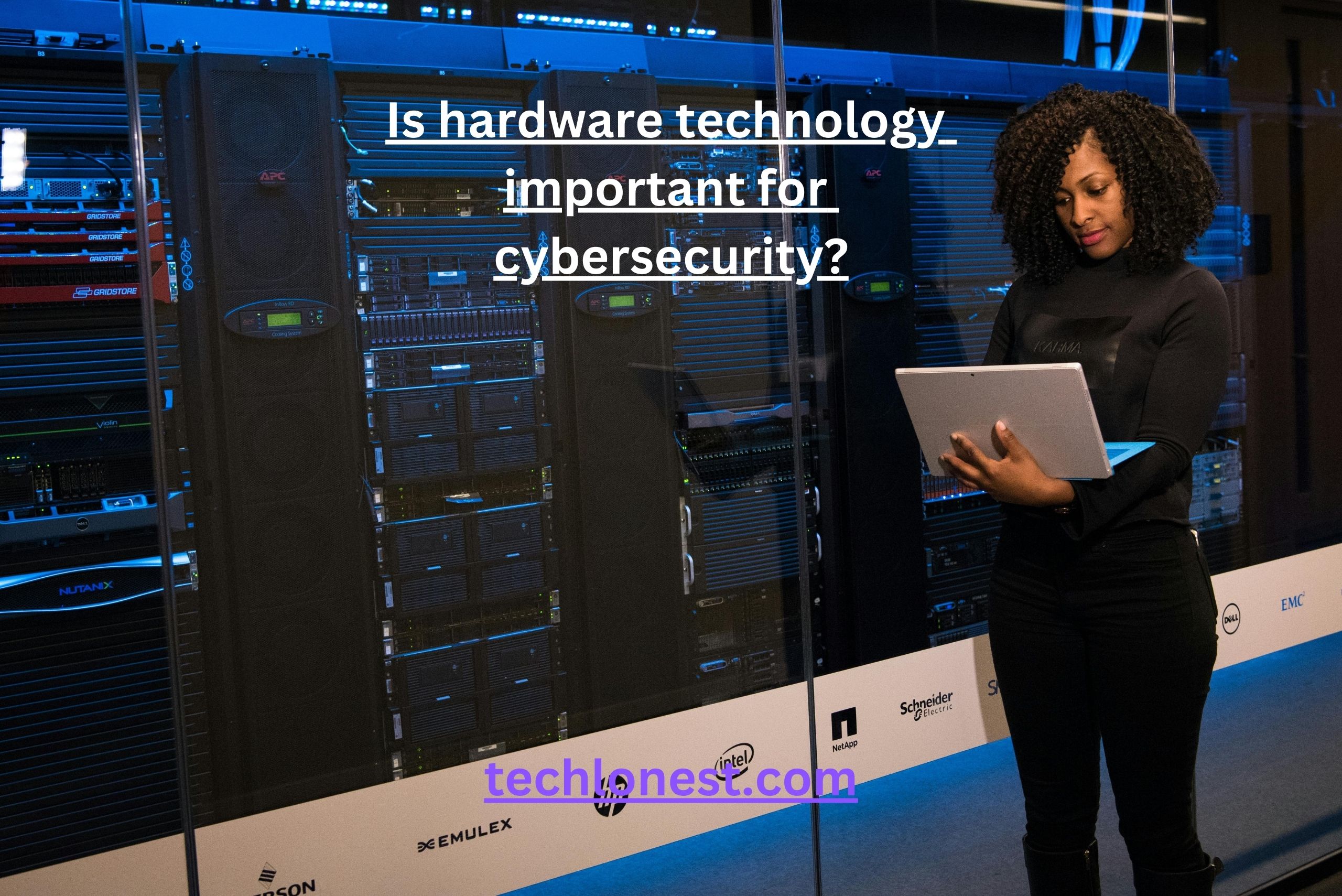In the ever-evolving virtual landscape, protecting facts and structures from cyber threats is a top priority for people, agencies, and governments. While software programs regularly take the spotlight, many humans wonder, “Is hardware technology critical for cybersecurity?” The answer is a powerful yes. Hardware inspires steady structures and offers a crucial layer of safety that complements software defenses.
In this newsletter, we’ll discover why hardware is important for cybersecurity, delve into hardware cybersecurity examples, highlight the top cybersecurity hardware gear, and have a look at how software program in cybersecurity works hand-in-hand with hardware to assemble an impenetrable defense.
Is Hardware Technology Important for Cybersecurity? Quora’s Take on the Debate

A famous question posed on systems like Quora is whether hardware technology plays a big function in cybersecurity. Many professionals agree that hardware security offers an unshakable base for protecting records, shielding structures from both bodily and virtual threats.
For instance, users frequently proportion insights into situations in which hardware mitigated cyber dangers. A remarkable discussion worried the notorious ATM malware attack, wherein hackers exploited a loss of hardware protection. This breach could have been avoided with tamper-evidence hardware components including Trusted Platform Modules (TPMs).
Quora highlights a vital takeaway: even as software program is crucial, its effectiveness depends on secure hardware.
Hardware Cybersecurity Examples: Real-World Cases That Prove Its Importance
To sincerely hold close the importance of hardware in cybersecurity, let’s observe actual international examples wherein hardware protection solutions have made a distinction:
Secure Boot Mechanisms in Laptops
Modern laptops frequently come prepared with secure boot capabilities, making sure the handiest dependent on software program runs in the course of startup. This prevents malware from embedding it self into the device before the running system masses.
Hardware Security Modules (HSMs) in Financial Institutions
Banks and monetary groups rely upon HSMs to keep and protect cryptographic keys securely. These tamper-resistant gadgets are important for stable online transactions and defensive client statistics.
TPM Chips for Enterprise Devices
Enterprises frequently use devices with TPM chips to beautify machine integrity. These chips shop encryption keys and make sure that the simplest authorized users can access touchy facts.
These examples spotlight how hardware creates a strong protection against cyber threats, providing solutions that software programs alone can’t gain.
Top Cyber Security Hardware Tools to Protect Your Systems
Investing in the proper cyber safety hardware gear can considerably bolster your defenses. Here are a number of the most effective equipment within the market:
- Hardware Security Modules (HSMs):
- Designed to protect sensitive information, HSMs are ideal for industries like healthcare, finance, and government. They encrypt statistics and secure them against external and internal threats.
- Firewall Appliances:
- Unlike software firewalls, hardware-primarily based firewalls provide a devoted solution for handling network visitors and preventing unauthorized entry.
- Secure USB Drives:
- These drives come with hardware-primarily based encryption, ensuring that sensitive statistics stay secure even if the device is lost or stolen.
- Processor-Level Security:
- Many modern processors include built-in encryption accelerators and other safety functions, consisting of Intel’s SGX (Software Guard Extensions), which offer steady enclaves for touchy computations.
These tools show how hardware generation strengthens cybersecurity efforts and gives exceptional safety.
The Role of Software in Cyber Security: Complementing Hardware Defenses
While hardware plays a crucial function, it doesn’t paint in isolation. Software in cyber protection enhances hardware by presenting dynamic and adaptive solutions. For instance:
- Antivirus Programs: Detect and neutralize threats that hardware can’t directly address.
- Firewalls: Work in tandem with hardware-based answers to reveal and block unauthorized visitors.
- Patch Management Tools: Ensure that each software program and firmware are updated to mitigate vulnerabilities.
By leveraging both hardware and software program, corporations can build a comprehensive cybersecurity framework. It’s critical to keep in mind that one without the other can leave critical gaps in protection.
What Is Hardware Security? Understanding the Basics
So, what’s hardware protection? It’s the implementation of bodily and virtual mechanisms inside hardware to protect against cyber threats. Unlike software program, that can regularly be bypassed or exploited remotely, hardware security is deeply included into devices, making it inherently more difficult to breach.
Key Features of Hardware Security:
- Tamper Resistance: Prevents unauthorized physical get entry to.
- Encryption Support: Enables green encryption and decryption of facts.
- Secure Storage: Stores sensitive facts like cryptographic keys securely.
- Authentication Mechanisms: Ensures that only legal customers and structures can get right of entry to sources.
Hardware security forms the backbone of modern-day cybersecurity practices, especially as cyber threats become more superior.
Future Trends in Hardware Technology for Cybersecurity

The future of hardware era in cybersecurity is promising, with rising technologies addressing ever-evolving challenges:
- Quantum-Resistant Chips: As quantum computing becomes a fact, hardware designed to face up to quantum-primarily based assaults might be vital.
- AI-Powered Security Devices: Hardware incorporated with AI capabilities will predict and prevent cyber threats in real-time.
- Biometric Authentication Hardware: Devices like fingerprint and retina scanners will retain to conform, presenting more secure and consumer-pleasant authentication methods.
Frequently Asked Questions (FAQs)
1. Is hardware era vital for cybersecurity?
Yes, hardware offers a secure foundation for all cybersecurity measures. Without hardware security, software program defenses may be without problems compromised.
2. What are some examples of hardware in cybersecurity?
Examples encompass Trusted Platform Modules (TPMs), Hardware Security Modules (HSMs), steady USB drives, and processor-level security functions like Intel SGX.
3. How does hardware beautify cybersecurity?
Hardware gives features like tamper resistance, stable garage of cryptographic keys, and mechanisms like steady boot, ensuring a sturdy protection towards threats.
4. Can hardware protection prevent all cyber threats?
No, but it drastically reduces risks by means of providing a steady base for software program defenses. A aggregate of hardware and software is crucial for complete safety.
5. Are there hardware-based gear for individual users?
Yes, equipment like hardware firewalls, encrypted USB drives, and devices with TPM chips are handy to character customers.
6. How does hardware protection differ from software program security?
Hardware safety is built into bodily devices, making it tougher to tamper with, whilst software program security is predicated on dynamic updates and detection mechanisms.
Conclusion
So, is hardware technology essential for cybersecurity? Absolutely. From protective encryption keys to stopping malware at the hardware stage, those technologies are quintessential in the combat against cybercrime. Whether you’re a character or a commercial enterprise, making an investment in the proper cybersecurity hardware gear can provide you with peace of mind and remarkable safety.
Start strengthening your defenses these days by exploring current hardware security solutions that work seamlessly with software programs to guard your virtual global.
